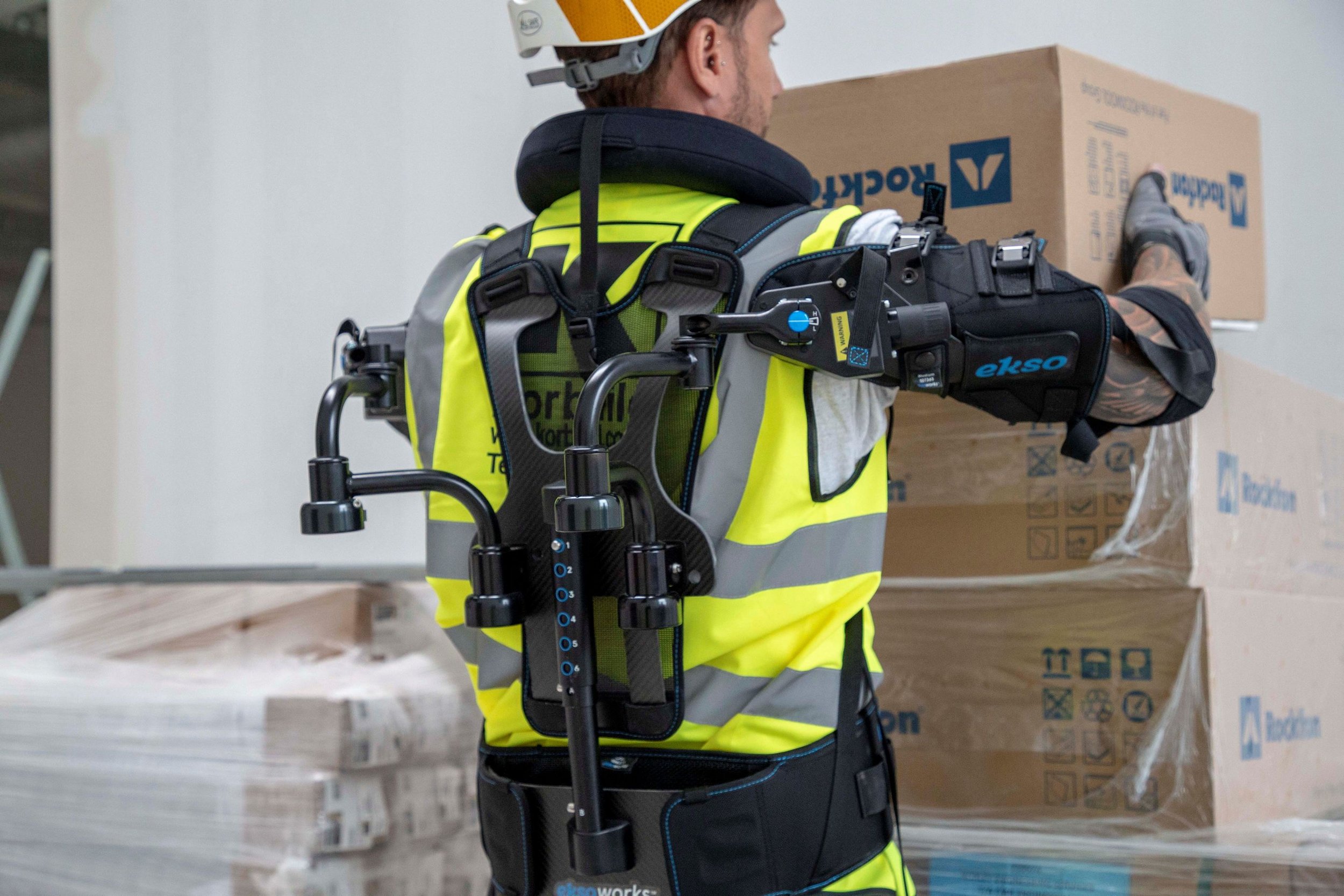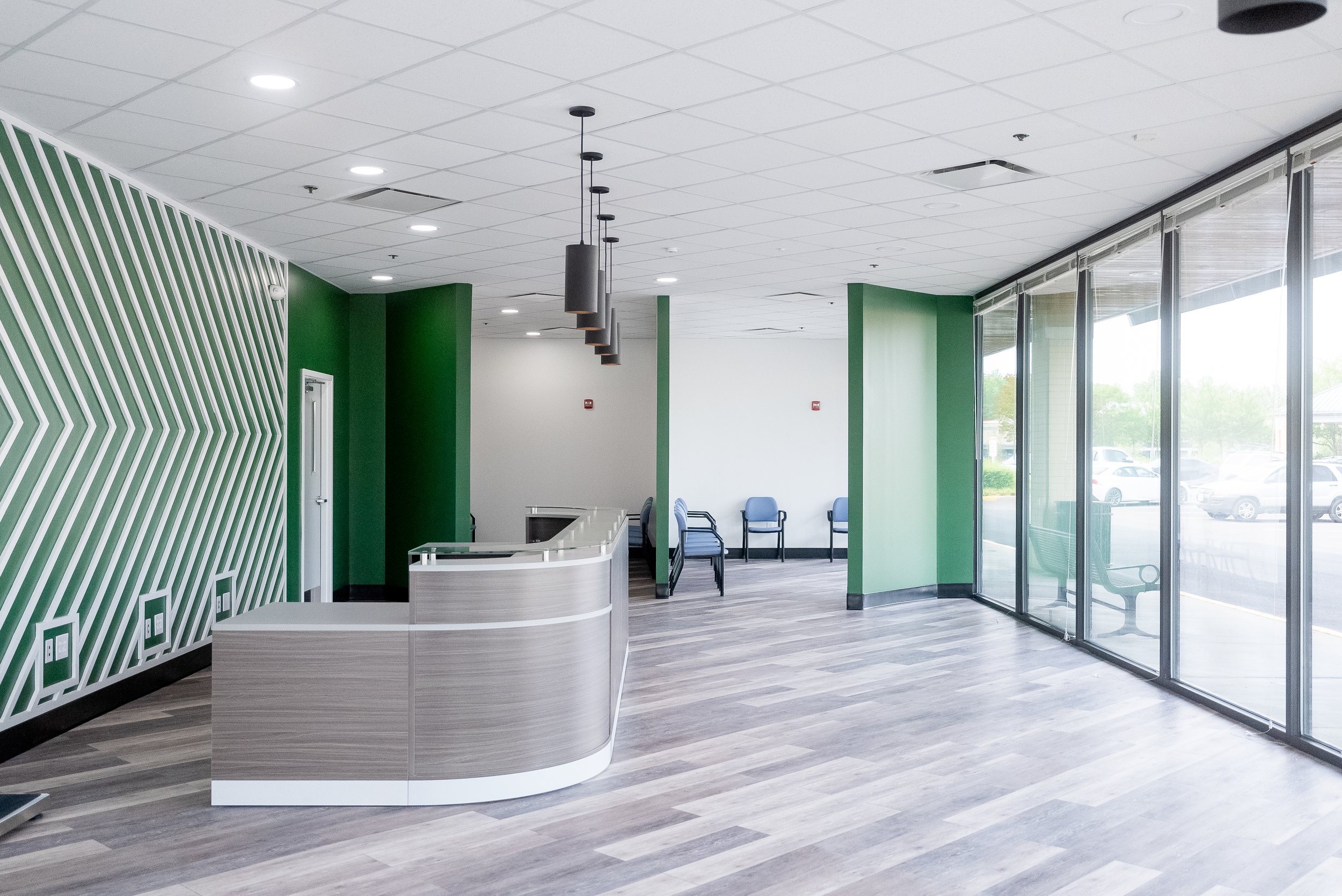Six Emerging Trends Shaping the Future of Construction
Leading into 2024, the construction industry is witnessing a transformative era marked by rapid advancements and shifting paradigms. As industry professionals, it's vital to understand these trends that are not only reshaping the way we build but also redefining our expectations of spaces. Let's take a look at the key trends currently shaping the construction sector.
At one point in time, deciphering the difference between a commercial and residential space was easy. Designers like Frank Lloyd Wright were very expressive, yet even this impressive office space for Johnson Wax is clearly commerical.
1. The Convergence of Residential and Commercial Design
A prominent trend is the blurring lines between residential and commercial design. This fusion is bringing the comfort and personalized touch of residential aesthetics into commercial spaces. This approach leads to more inviting, user-centric commercial environments, emphasizing a blend of functionality with a homely feel.
What once was easy to spot the difference, today it’s almost impossible to tell apart a home form an office space.
In the past, cubicles made up almost every workplace. Today, there are businesses in which cubicles still exist; however, for many businesses, there is a great shift that has happened to common spaces and the inclusion of natural materials and warm colors.
2. Technology: A Catalyst for Change
The integration of technology in construction is revolutionizing project management and execution. Tools like Building Information Modeling (BIM) are enhancing efficiency, improving precision, and facilitating better collaboration among stakeholders. This technological wave is setting new benchmarks in the construction industry, paving the way for smarter, more efficient building practices.
Other examples of technology that is making a massive difference in construction would be Augmented Reality (AR,) Virtual Reality (VR,) 3d Printing, and even Wearable Tech such as exoskeletons and biometrics. Through these technologies, contractors are increasingly more capable of exploring their concepts before execution and exercising greater safety precautions and tracking of progress along the way.
As the construction industry continues to evolve, embracing these technological trends is crucial for staying competitive and meeting the changing demands of the market. From AR and VR to 3D printing and sustainable practices, these technologies are not just reshaping the way we build but are also paving the way for a more efficient, safe, and sustainable future in construction.
Wearable technologies such as exoskeletons like the “Eksovest” by Willmot Dixon and Eksobionics have entered the marketplace, allowing the wearer to experience less wear and tear on the body, making a hard day’s work more manageable and effective, improving both quality of life and safety.
Companies like SQ4D are even using 3D Printing Technologies and Concrete to build homes in ways we’ve never seen done before- in just two days.
3. Sustainability at the Forefront
Today's construction industry is rapidly evolving towards sustainable practices. This paradigm shift towards eco-friendly construction methods includes the implementation of green technologies like solar panels and energy-efficient lighting. Builders are increasingly using sustainable materials like bamboo, reclaimed wood, and recycled metal, thereby reducing the environmental impact of their projects. These initiatives extend beyond the construction site, as modern buildings often incorporate features like green roofs, efficient waste management systems, and smart energy systems to reduce the building's carbon footprint over its lifetime.
Whereas most people first think about solar-powered solutions when it comes to sustainability, there are so many more solutions to bringing sustainability into the process of construction, including smart HVAC systems, material choices, and even designing products and services sustainably.
4. Collaborative Approaches in Project Delivery
Collaborative project delivery methods, such as Design-Build and Integrated Project Delivery, are reshaping the construction landscape. These methods are breaking down silos between architects, builders, and clients, fostering a more holistic approach to construction. They encourage active participation from all stakeholders from the project's inception, leading to more cohesive design and construction processes. This collaborative approach not only enhances efficiency but also results in projects that better meet client needs and expectations.
5. Resilience in Design
Designing for resilience is increasingly important in an era of climate change. This involves creating structures that are not only robust and adaptable to environmental challenges but also contribute positively to their surroundings. Techniques like modular construction and the use of adaptive materials are becoming more prevalent. Buildings are being designed to withstand natural disasters, with features such as flood-resistant foundations and wind-resistant designs.
Companies like Deltec Homes have focused and continue to focus on making structures that stand the test of time and weather. Learn more about their techniques and design principles and become inspired by clicking here.
6. Personalization in Construction
The trend towards personalization in construction is allowing clients to infuse their spaces with individuality and character. This goes beyond aesthetic choices, encompassing functional aspects tailored to the client's specific needs. Boutique choices are no longer based on materials and style, but also the way you live your day-to-day life is now an influence on the layout and flow of your home. In addition, making your life easier is also a goal, meeting you where you’re at in your needs, wherever they may be.
Technology plays a key role here, with tools like 3D visualization software enabling clients to see and tweak designs before construction begins. This approach ensures that the final product is not just a building but a reflection of the client's vision and lifestyle.
Companies like Teakwood Enterprises in Fredericksburg, Virginia truly specialize in making your custom dream home fit specific to your needs and family DNA.
Conclusion: Adapting to a Changing Industry
The construction industry is at a pivotal juncture, embracing trends that prioritize sustainability, safety, collaboration, resilience, and personalization. These trends are not merely passing fads; they represent a fundamental shift in how we approach construction and space design. They promise a future where buildings are not just structures but extensions of our environmental and personal values.
Landis Enterprises is a Class-A Virginia Contractor specializing in Commercial Construction, Commercial General Contracting, Tenant Build-Outs, and Commercial Renovations.
To learn more about our services, call us at 1-833-215-7161 or visit our homepage. Your dream space is waiting to be transformed!








